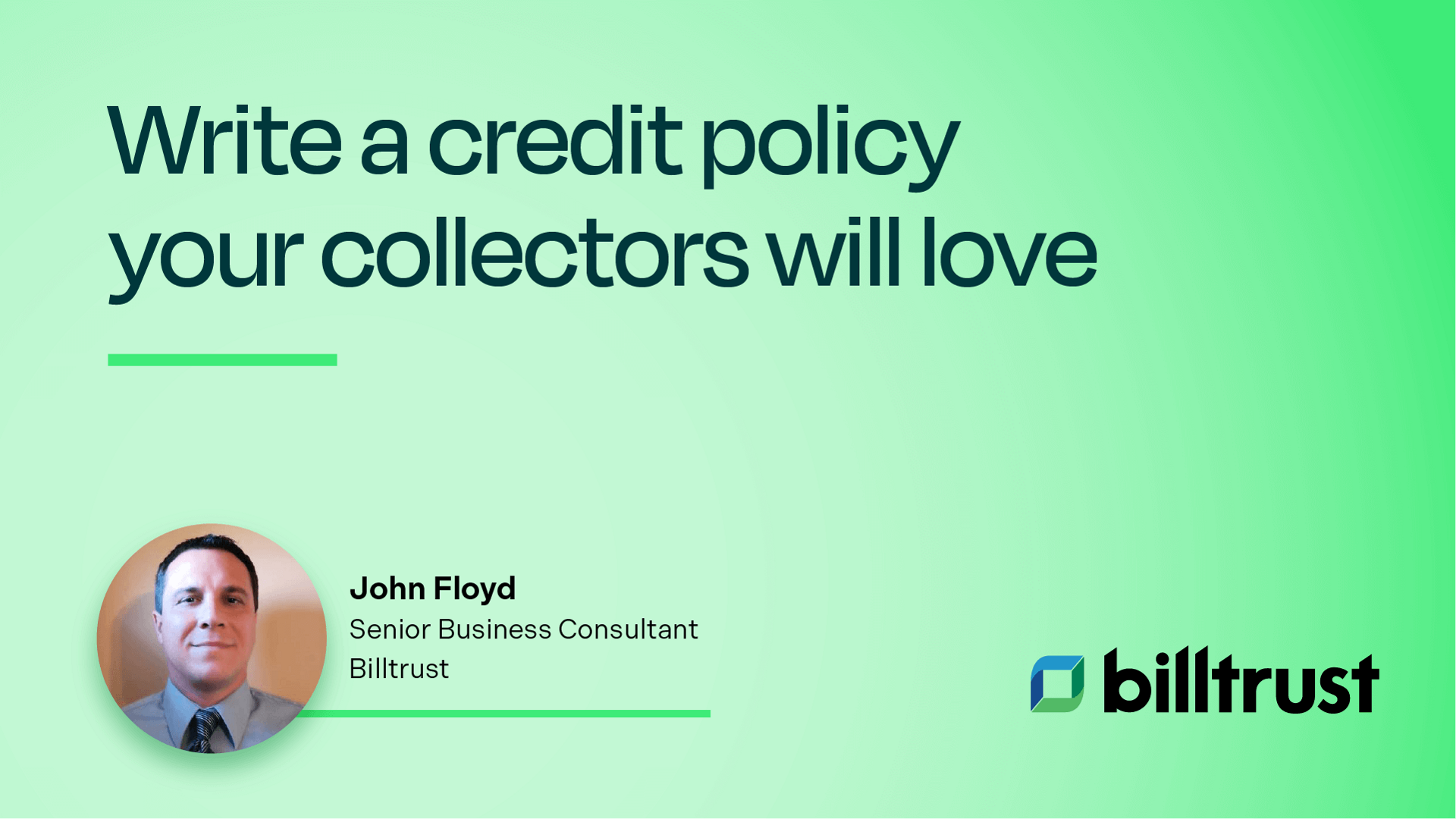
By John Floyd, Billtrust Senior Business Consultant
Batman and Robin, Romeo and Juliet, and peanut butter and jelly. These are all well-known, great combinations. Why do I mention them? Because I’m here to talk about two things that go hand in hand, Credit and Collections.
All parts of the order-to-cash (O2C) cycle are dependent on each other. I have already written about how invoicing and cash application affect collections. However, no two parts of the order-to-cash cycle are more closely aligned than credit and collections. Collections is the output of credit decision-making. If poor credit decisions are made, then your collections will suffer. This is why your credit process matters.
Collectors utterly depend on solid credit processes
If a customer was not properly vetted during the credit process, they will cause you problems within your collections. A company’s overall accounts receivable balance may be poor, not due to the collections department’s ability to collect, but because of a failure at the credit stage. Having a strong credit-granting process goes a long way toward being able to maintain a healthy DSO and low delinquency as a percentage of AR.
Collections depend on credit to make sure the customers they are collecting on can meet their obligations. It doesn’t matter how convincing you are as a collector, you cannot draw blood from the proverbial stone. If a customer is overextended with those obligations, it will lead to delayed payments. This in turn means these customers will always have balances in later stages of delinquency.
Late payors take up more collection resources
Accounts that pay poorly take a lot more of a collector’s time. Most collections policies require more contacts in shorter intervals for customers with balances in later stages of collections. Poor credit customers will typically have balances 90+ days past due if not older. When you do get payments from them, usually they will just pay enough to keep orders shipping or to avoid placement with a third-party collections agency.
If your company has bad credit granting practices, then you have a number of accounts that struggle to remit payment. Each one takes more of your collectors’ time, which in turn means good credit customers get ignored. This can cause them to begin to become past due as well or at least pay later than normal. With your time wrapped up with bad credit accounts, your good credit account’s customer experience may suffer.

Coordinate your credit and collections policies
It is advisable that you have a documented credit and collections procedure and that you write them in conjunction with one another. There should not be two separate policies, but instead, one policy that documents the process, starting at credit granting, all the way through collections. The relationship is so symbiotic, you need to consider one when you create the other. Credit is the beginning; collections, the ending.
There will be times when your credit-granting criteria are altered by decisions made at the highest levels of your business. Depending on economic conditions or your company’s overall goals, there are times they may want you to relax credit policies. If your company wants to increase revenue as an imperative, you may start to accept customers you normally wouldn’t. They may also want you to give customers credit limits that you aren’t necessarily comfortable with in order to promote that revenue growth.
Any change to a credit policy should be mirrored with an adjustment to your collections. If it is decided that in order to generate more revenue credit policies need to be relaxed, then a similar correction needs to be made on the collections side of the equation. Taking on more risk is a tricky proposition, it can be effectively managed. Having less stringent credit standards means having more stringent collections policies.
More risk requires greater vigilance
With more risk on the books, you want to make sure you are more closely monitoring credit lines. Just because you relaxed the standards, doesn’t mean you no longer have any. Perhaps accounts that would normally only be reviewed every year from a credit standpoint, now get reviewed every six months. If you identify certain customers as having a very high risk, make sure you flag them to stay on top of their creditworthiness.
From a collections standpoint, you want to be more aggressive with your contact frequency. Sending out pre-delinquent correspondences is a good way to start the collections process before they become past due. From that point on, you want to make sure you lessen the days between each contact. The more contacts you make with a customer, the better chance you have of receiving payment or at least gathering information so you can take any possible precautions.

Counteract payment risk by adjusting credit policy
Another adjustment to make is how past due a customer has to be before you will no longer ship any new product, or perform any more services. Maybe, during normal times, 90 days would be your threshold of when you would drop a customer’s line and no longer continue giving new products or services. If you are accepting more risk, maybe you want to drop that to 75 days or even 60 days. This will alleviate any new receivables hitting their account and decrease the amount you may have to potentially write off.
You will also want to hold them tighter to their credit limit. Many times during the normal course of business, companies will exceed their credit limit, even if you don’t have a commitment when they’re going to pay. You accept a little extra risk for a customer for a short period of time. But when the overall business decision is to accept more risk, you want to hold those customers to their credit limit and not exceed it unless you have good reason and assurances they will be paying.
Match your collections activities to your risk
It would work in almost the opposite if economic or business reasons call for the tightening of credit. There are times your company might want to greatly reduce their risk and have more rigorous credit policies. With more scrutiny on the front end of the process, you can be more lax on the back end. I am not suggesting a laissez-faire approach, but knowing that the credit a customer got was what they were worthy of, and maybe even a little less, you can feel confident that late payments are not as much of a red flag. You will also have to spend less time on bad credit customers because there will be a lot less of them.
Wrapping up risk with coordinated credit and collections policies
Making sure you properly set and monitor a customer’s credit worthiness is vital to performing timely collections. Making poor credit decisions leads to more difficult collecting. When setting your credit policies (beginning of the process), always make sure you keep in mind how you want to collect (the ending of the process).

